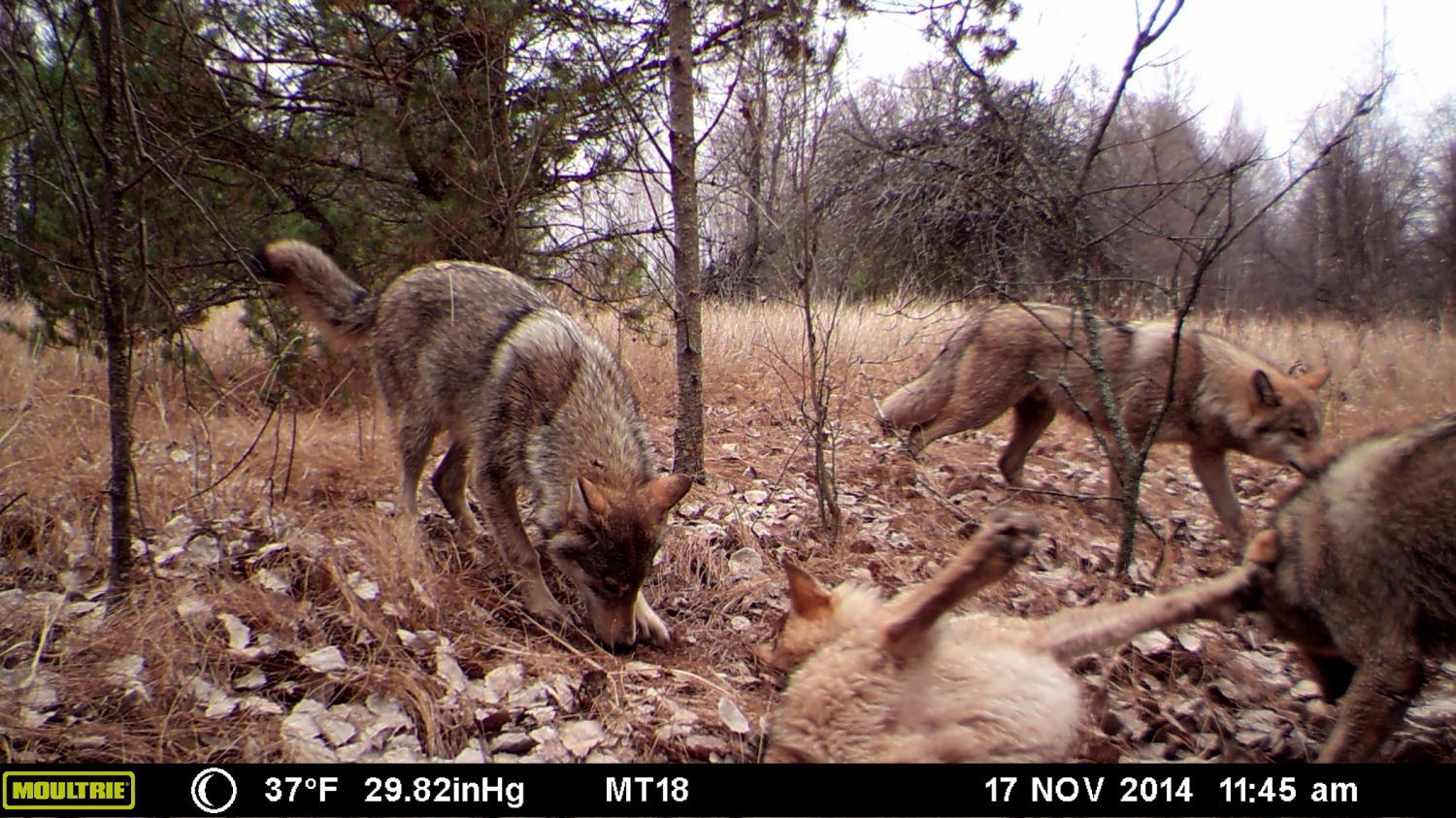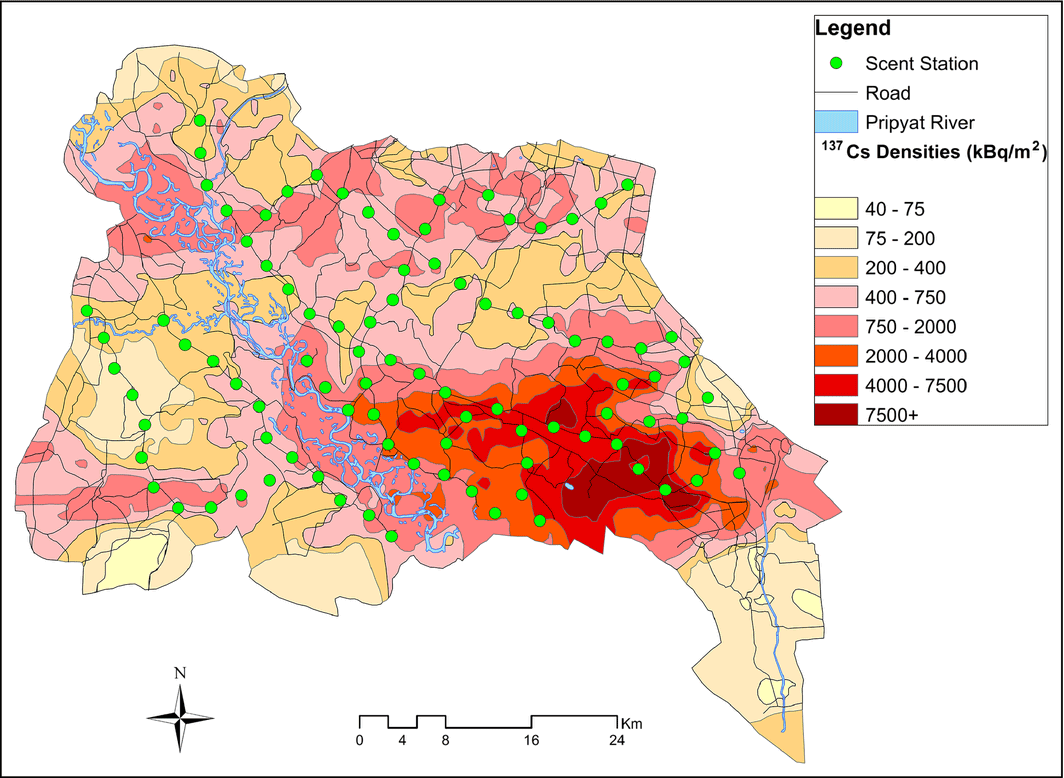Hidden video cameras filmed the abundance of animal life in the Chernobyl zone

A pack of wolves in the Chernobyl zone; camera activated motion sensor
In the 30 years since the Chernobyl disaster, the exclusion zone around the station has turned into a natural nature reserve . As it turned out, radiation is not so terrible for numerous wild animals as man. In the absence of the worst predator, almost all species of animals increased their numbers.
Scientists have spoken about the abundance of natural life in the Chernobyl zone before, but have so far drawn conclusions based on the calculation of the number of traces. Now biologists for the first time in history have conducted a large-scale experiment with hidden photography in the Chernobyl zone.
Specialists from the University of Georgia installed 30 cameras in the territory of the Polesye State Radiation and Ecological Reserve, which covers an area of 2,162 km 2 in Belarus. The study lasted for five weeks: the cameras worked in 94 places throughout the reserve, each of them had seven days.
')

Hidden stations were located on a tree or bush and greased with grease to attract animals by smell. The distance between the cameras was more than 3 km, so that the same copy did not hit the lens of the two cameras during the day.
Scientists have documented all the animals that appeared in front of the cameras, the frequency of their visits. The research results were published on April 18, 2016 in the journal Frontiers in Ecology and the Environment .
During the operation of the camera recorded 14 different animals. In the frames below, marten, bison, badger and wild boar were noted.

Most often wolves, boars, foxes and raccoon dogs appeared in front of the cameras. All these species were found, including near the most contaminated areas in the Chernobyl zone.
The experiment confirmed earlier assumptions about a large variety of species in the Chernobyl zone, as well as the fact that the level of radiation does not affect the distribution of animals.

In the absence of man, animals really do feel great, and the radiation hardly bothers them. Biologists say that under irradiation is 10-35 times higher than normal animals live less and leave less offspring, but for them it is not as dangerous as human presence. The experiment of the 1990s was instructive, when a handful of endangered Przewalski's horses were brought to the zone. They not only survived, but also bred in the wild.

Przhevalsky's horse in the Chernobyl zone
“There is a huge difference between Chernobyl before the accident and Chernobyl 30 years later,” says biologist Denis Vishnevsky, who works in the Chernobyl nature reserve. “These animals are probably the only positive result of the terrible catastrophe that happened here.”
Source: https://habr.com/ru/post/393301/
All Articles